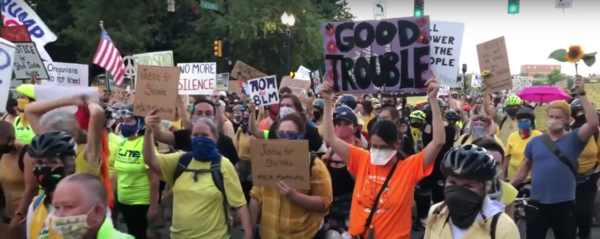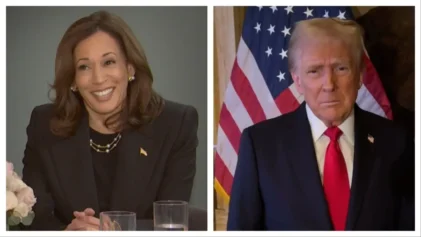At a White House coronavirus briefing on Wednesday, July 22, Donald Trump suggested that Black Lives Matter protests, which continue to occur around the country, led to the current surge in COVID-19 cases. However, experts say they have not identified any links between protests and the spread of the virus in major cities like New York, Chicago, and Minneapolis.
During the press conference,Trump implied that the protests made America more vulnerable to the virus, saying, “Cases started to rise among young Americans shortly after demonstrations, which you know very well about, which presumably triggered a broader relaxation of mitigation efforts nationwide.”
Demonstrators have continued to take to the streets in major cities across the U.S. in protest of the death of George Floyd and other unarmed Black people killed at the hands of police officers. Trump has regularly been critical of the demonstrations, calling protesters “anarchists and agitators” in a tweet, and was recently criticized for deploying federal agents to Portland to mitigate the continued unrest in the city.
Public health officials noted that protests take place outdoors,
and that many demonstrators wear face masks, a measure that has been shown to reduce the spread of the virus. They have said that if protests were a significant cause of the surge in COVID-19 cases the case count would spiked within two weeks of the demonstrations, but that was not the case in cities that have seen the most widespread unrest.

Experts say the protests actually caused an inadvertent increase in social distancing, because people not involved in the protests were more likely to stay home and off the streets during the demonstrations. Even in cities that did experience an increase in cases after protests, they experts believe the surge was driven primarily by other factors. In particular, reopenings have allowed people to resume normal activities, like spending time at crowded restaurants and bars.
Coronavirus cases in the U.S. have topped 4 million, and nearly 150,00 Americans have died. As some states resist returning to stay-at-home mandates, the nation faces a death toll of 1,000 people a day.


